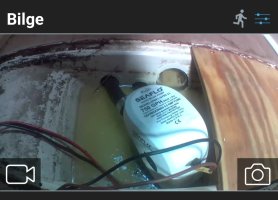I think it's time I found the cause and fixed it.
The boat went into the water 2 and a 1/2 weeks ago and today was the first time I had time to go to the boat since then.
For the past few days it's rained quite a bit and the weather has been rough - 20-30kn winds, and choppy.
The bilge pump fuse blew and I had 15+ gallons of water in the bilge. About 1" below the cabin sole. Guess I got lucky this time.
I'm going to look into installing this : https://lifeempirically.com/2018/03/12/build-your-own-diy-arid-bilge-or-dry-bilge-system/
Can anyone provide suggestions on smart ways to troubleshoot where the water is coming in from ? I think it's rain water and more. I've checked the anchor locker and drain tube - it looks fine. I still have to inspect all the hoses for the cockpit drains, the bilge pump hose etc. Hopefully this weekend.
Thanks
Vasu
The boat went into the water 2 and a 1/2 weeks ago and today was the first time I had time to go to the boat since then.
For the past few days it's rained quite a bit and the weather has been rough - 20-30kn winds, and choppy.
The bilge pump fuse blew and I had 15+ gallons of water in the bilge. About 1" below the cabin sole. Guess I got lucky this time.
I'm going to look into installing this : https://lifeempirically.com/2018/03/12/build-your-own-diy-arid-bilge-or-dry-bilge-system/
Can anyone provide suggestions on smart ways to troubleshoot where the water is coming in from ? I think it's rain water and more. I've checked the anchor locker and drain tube - it looks fine. I still have to inspect all the hoses for the cockpit drains, the bilge pump hose etc. Hopefully this weekend.
Thanks
Vasu

